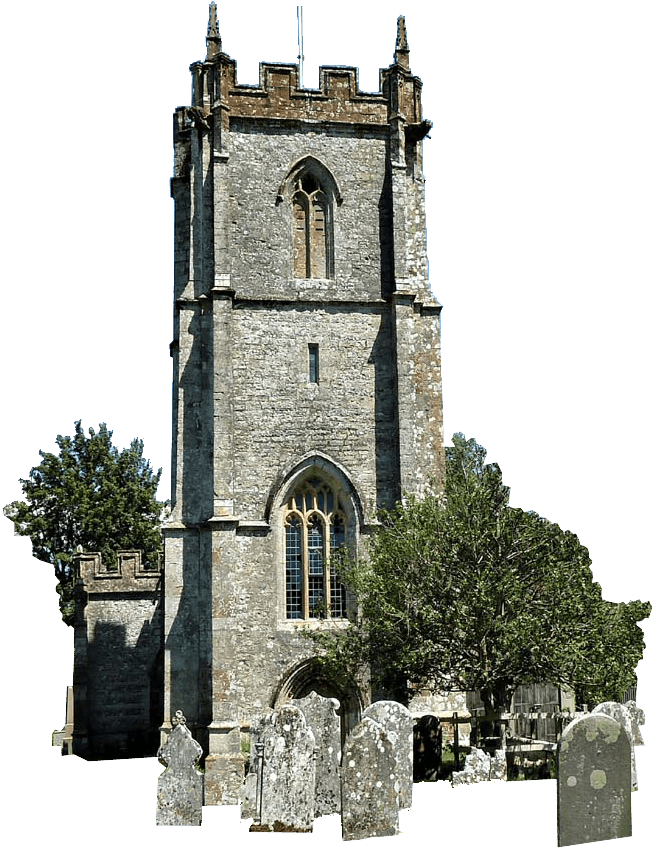Sydling has been spelt in various ways. In a later copy of the Anglo-Saxon charter, in 934, it appears as ‘Sydeling’. In Domesday Book, 1086, it is ‘Sidelince’ and by 1212 ‘Sideling’. By 1288 it is distinguished from Up Sydling by the name ‘Broadsidling’ meaning ‘the broad ridge’ (Old English side + hlinc), referring to one of the hills above the village. The St.Nicholas comes later from the dedication of the church.
There are many Celtic remains in the vicinity of Sydling. Hog Hill, Crofts Down, East Hill, Breakheart Hill, Loscombe Hill, Ayles Hill and Southfield Hill all have field systems. Lynchets or strips forming terraces can be seen four hundred yards east of the village on the western and north-western slopes. Also, two to three hundred yards east of Up Sydling Farm, there are terraces on the southwestern slopes.
Traces of Saxon strip farming were found in the 1950s at Sherrin’s Farm. A possible Celtic dwelling has been found at Buckland Down, and excavations in 1958 at Shearplace Hill, east of Huish, found a Celtic farmstead with a circular hut 25 feet in diameter. Other finds included two thousand pottery sherds, flint and iron pyrite pot boilers, a decorated bone weaving comb, clay roof or loom weights of a cylindrical type and the bones of cow, sheep, pig and deer. The pottery was dated between the Late Bronze and early Iron Age (2000 to 1000 BC), and the weaving comb from the Iron Age itself The earthworks of Shearplace are clearly visible from the road to Grimstone, being four to five hundred feet up on Grimstone Down.
The earliest mention of Sydling in the Winchester archives is 933. In that year, King Athelstone built the Benedictine Abbey of St.Samson at Milton for the soul of his brother Edwin, and amongst its endowments were thirty hides of land at Sydling, and six at Hilfield as a provision for their table. The Abbot had the right to present a minister to the church, who was to receive tithes as rector, pay a pension of thirty shillings per annum to the Abbey, and receive glebeland. (This was in Church Lane and finally sold off in 1963.)
During the Middle Ages the village belonged to Milton Abbey but after the Dissolution of the Monasteries it passed to Winchester College who until recently still owned about twenty acres of land.
An idea of Sydling’s past can be gathered from existing old and significant buildings. The church can be traced back to 983, although the present fabric is 15th century. Other buildings of historical interest include the vicarage, and the bakery built in 1640 and East House 1780, a reminder of East India Company wealth.
There is a 1787 picture of the Court, once the hub of mediaeval village life. The Congregational Chapel (1834) and the Methodist Church (1866) are private homes today. Brewery House reminds us of the former village brewery but the blacksmith’s smithy closed some years ago. The old petrol pump in the high street recalls the vanished village shop and the 17th and 18th century Hit or Miss in East Street the earlier beer house.
Farming, once the backbone of the village, is no longer a major employer, but it still continues, and plays an important part in the conservation of wild life. Much of the valley is now farmed organically.
